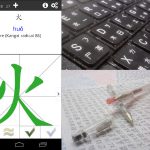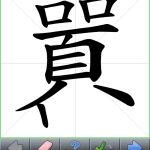Articles in the ‘Key study hacks’ category Page 3
-
Study more Chinese: Time boxing vs. micro goals
Time boxing and micro goals are both excellent strategies for getting things done, but which one is most suitable for learning Chinese? In this article, I discuss the pros and cons with the two methods and how that relates to learning Chinese. The short answer is that I use both a lot, but in different situations.
Read → -
7 ways of learning to write Chinese characters
There are many ways of practising writing Chinese characters and they all have their pros and cons. In this article, I discuss seven different ways of practising and what advantages and disadvantages they have for you as a learner. Which do you use?
Read → -
How to reach a decent level of Chinese in 100 days
Scott Young has written a lot about how to learn more efficiently and this year he has turned his focus entirely on languages. He spent three months in China and managed to reach a very decent level of Chinese in that time, including passing HSK4. In this article, he shares his experience and the strategies he used. The article also contains two video interviews, one with John Pasden (Sinosplice) and one with me.
Read → -
Three ways to improve the way you review Chinese characters
In this article, I discuss three things you can do to improve the way you review characters, mainly focusing on avoiding rote learning, time quality and making sure your study method really prepares you for what you want to use your Chinese for. The article also contains a video about how to improve your character reviewing with Skritter!
Read → -
Sensible Chinese character learning revisited
In a way, learning Chinese characters is very much like learning vocabulary in any foreign language and much of the efficient methods developed there works well for Chinese as well. However, characters are also fundamentally different from words in English and this influences how we should learn them as well. This article is a recap of how to learn Chinese characters in a sensible way. It is also a prologue for the upcoming character learning challenge.
Read → -
Phonetic components, part 2: Hacking Chinese characters
This is the second and final article about using phonetic components to hack Chinese characters and make it considerably easier to handle similarly looking characters. This article describes both the principles and gives plenty of examples that might resolve some of your current problems for you.
Read → -
Phonetic components, part 1: The key to 80% of all Chinese characters
At least 80% of all Chinese characters are made up of one semantic component (meaning) and one phonetic component (pronunciation). The sheer number of characters formed this way means that these characters ought to be taught properly, yet I think this topic is largely glossed over. This is the first article of two dealing with phonetic components and how they can help you learn Chinese better.
Read → -
Learning how to learn Chinese through self-experimentation
Rigorous scientific research typically requires large sample sizes, otherwise it isn’t possible to draw any conclusions about the population at large, which is the goal of most studies. However, experimenting with yourself as the only participant might not be relevant for other learners, but it’s highly relevant for you. This article is about how to use self-experimentation to learn Chinese.
Read → -
Horizontal vocabulary learning in Chinese
The normal thing to do when we learning characters or words is to focus on deepening our knowledge, researching components and understanding more about what we’re trying to learn. Some problems can’t be alleviated this way, however, instead they call for horizontal vocabulary learning, i.e. to putting the character or word into context and to compare it with similar characters or words. Only then can we grasp the bigger picture.
Read → -
How to create mnemonics for general or abstract character components
Anyone who has tried mnemonics for learning Chinese characters knows that some components are easier to link together than others. This article discusses in detail how to deal with abstract or general character components and how to handle components with the same or overlapping meaning, an essential skill if you’re serious about character learning.
Read →







